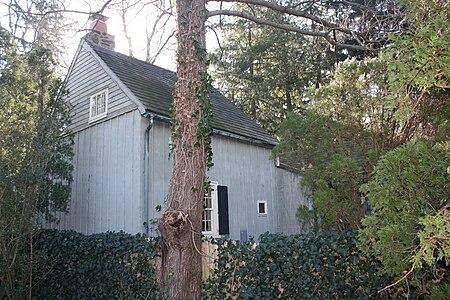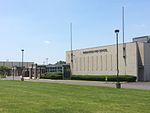Jacob Kastner Loghouse
1754 establishments in PennsylvaniaHouses completed in 1754Houses in Montgomery County, PennsylvaniaHouses on the National Register of Historic Places in PennsylvaniaMontgomery County, Pennsylvania Registered Historic Place stubs ... and 1 more
National Register of Historic Places in Montgomery County, Pennsylvania

Jacob Kastner Loghouse is a historic home located at Spring House in Lower Gwynedd Township, Montgomery County, Pennsylvania. The log house was built about 1712 to 1754, and is a 1+1⁄2-story, English single pen plan dwelling. It measures approximately 15 feet wide and 16 feet, 6 inches, deep and has a stone cellar. The house is covered with board and batten siding and has a purlin roof. Also on the property is a contributing well.It was added to the National Register of Historic Places in 1996.
Excerpt from the Wikipedia article Jacob Kastner Loghouse (License: CC BY-SA 3.0, Authors, Images).Jacob Kastner Loghouse
Norristown Road, Lower Gwynedd Township
Geographical coordinates (GPS) Address Nearby Places Show on map
Geographical coordinates (GPS)
| Latitude | Longitude |
|---|---|
| N 40.18 ° | E -75.213888888889 ° |
Address
Norristown Road
Norristown Road
19002 Lower Gwynedd Township
Pennsylvania, United States
Open on Google Maps




